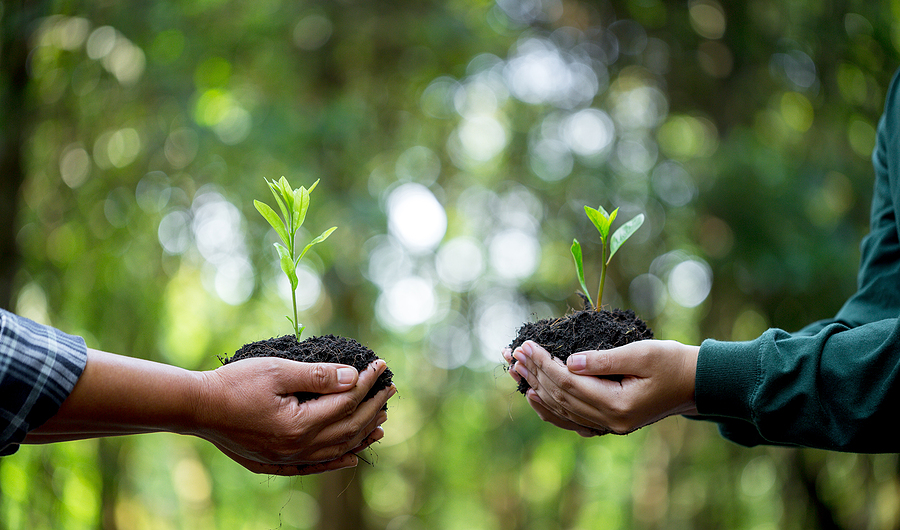In the vast world of dendrology, or the study of wooded plants, two broad categories often take center-stage: deciduous and coniferous trees. These two terms, while perhaps familiar, may spark a question: what precisely defines each group, and how do they differ from one another?
This blog post will explore these fascinating classifications of trees, delving into their unique characteristics, seasonal behaviors, and their roles in the ecosystem. Whether you’re a seasoned botanist, an avid gardener, or a curious nature lover, strap in for an enlightening journey through the distinctive worlds of deciduous and coniferous trees.

What Makes a Tree Deciduous?
Firstly, let’s define the term deciduous. Derived from the Latin word “decidere,” meaning to fall off, deciduous trees are those that lose their leaves in the autumn and remain bare throughout winter until new growth appears in the spring. Some may refer to these trees as “broadleaf” trees, as their leaves typically have a wide and flat shape. Examples of deciduous tree species include maple, oak, birch, and cherry.
The Life Cycle of a Deciduous Tree
Deciduous trees are thriving in many regions globally. They’re most abundant in temperate climates such as North America, Europe, and parts of Asia. These environments experience seasonal changes, which influence the life cycle of deciduous trees. In the spring and summer months, when sunlight and warmth are plentiful, these trees produce an abundance of chlorophyll. This green pigment helps them absorb energy from sunlight to fuel their growth. As autumn arrives and days become shorter, deciduous trees prepare for winter by shedding their leaves. They do this to conserve their energy and protect themselves from harsh weather conditions. In the winter, without leaves or photosynthesis, deciduous trees enter a dormant state until spring returns.
The Evergreen Nature of Coniferous Trees
Unlike deciduous trees, coniferous trees are called “evergreens” because they retain their foliage year-round. They have thin needle-shaped or scaled leaves that allow them to withstand cold, harsh winters. These trees are also more common in colder regions, such as Canada, Scandinavia, and parts of Russia. Species like pine, spruce, and cedar fall under the coniferous category.
The Adaptations of Coniferous Trees
Conifers have several unique adaptations that enable them to thrive in colder climates. Their needle-like leaves have a smaller surface area, minimizing water loss and reducing the risk of frost damage. They also produce a waxy coating on their needles, which further helps retain moisture. Conifers are also known for their deep root systems, which allow them to gather nutrients from deeper soil layers where they can remain unfrozen during winter months.
The Role of Deciduous and Coniferous Trees in the Ecosystem
Both deciduous and coniferous trees play essential roles in their respective ecosystems. Deciduous trees provide habitats, food, and shelter for a variety of animals, insects, birds, and microorganisms. Their fallen leaves also enrich the soil with nutrients as they decompose. In contrast, conifers provide year-round shelter and food for wildlife, including birds and small mammals. Their dense foliage also helps protect the soil from erosion and provides a natural barrier against wind and snow.
Understanding the Differences
While deciduous trees lose their leaves in winter as part of their natural cycle, conifers maintain their evergreen nature all year round. Deciduous tree leaves are typically broad and flat, while coniferous tree leaves have a needle-like shape or are scaled. Deciduous trees grow in temperate regions, whereas conifers thrive in colder climates. Their adaptations and roles within the ecosystem also differ. However, both deciduous and coniferous trees contribute to the beauty and diversity of our natural world.
In Conclusion
Deciduous vs. Coniferous: two unique categories of trees, each with their defining characteristics and roles in the ecosystem. As we’ve explored, these differences go beyond their seasonal behaviors and foliage shapes; they’re also shaped by their environments and adaptations. Whether you prefer the bold colors of autumn leaves or the tranquil greenery of evergreens, both types of trees are essential to our planet’s health and biodiversity. So next time you take a walk in the woods, remember to appreciate the beauty and significance of both deciduous and coniferous trees.
Are you in search of reliable and insured tree care services close to home? Contact Complete Tree Care at 317-783-2518 for affordable tree services in Indianapolis, Indiana and its surrounding counties. We provide residential and commercial tree services, as well as certified arborist services.
Related Posts:
Questions and Answers About Oak Tree Care
Should I Spray Anti-Desiccants on My Evergreen Trees?
Common Glossary Terms for Tree Leaves
